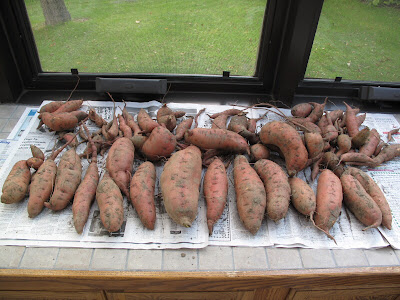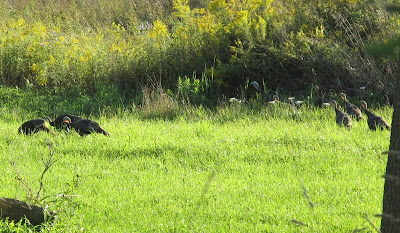Sweet potatoes are more often grown in the southern states since they require a long/warm growing season. As it turned out, this was one of the warmest summers on record and a perfect year growing sweet potatoes.
With our weather turning cooler, we decided to see how our crop did. The first hill we dug had a monster 10 inch spud and several nice sized potatoes.
Here's a photo of the yield from five hills. We only planted five hills of potatoes this year, but plan to plant more next year.
Our son Chuck, who lives in Iowa, also planted sweet potatoes for the first time this year and also had great results.
The sweet potatoes also have nice flowers.






























